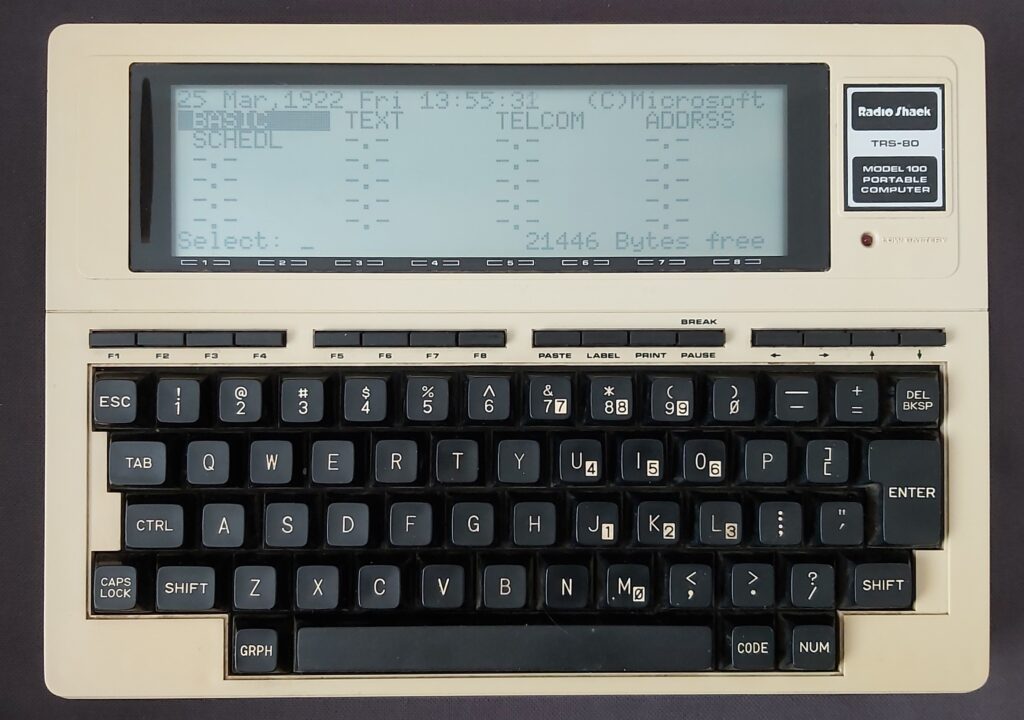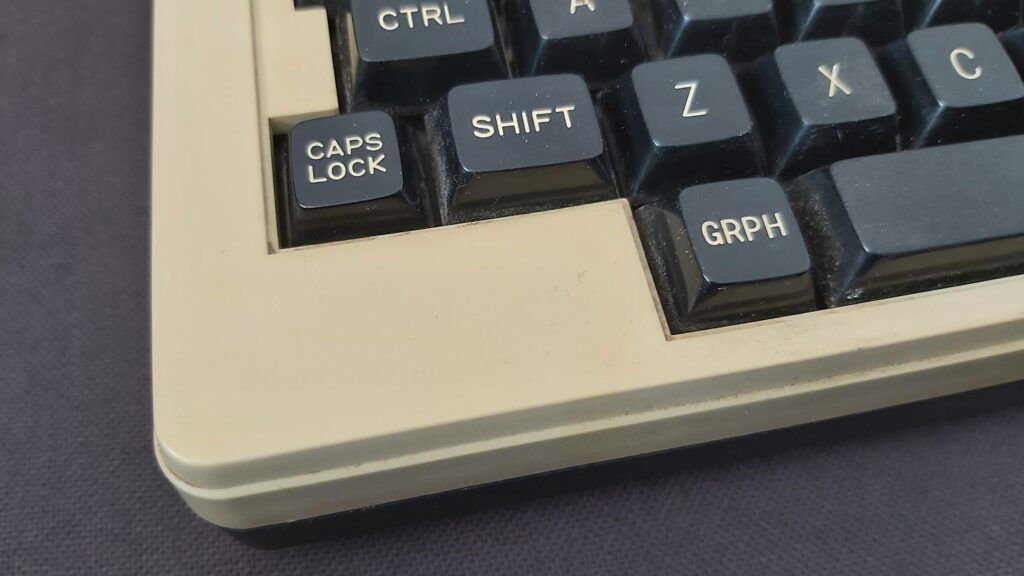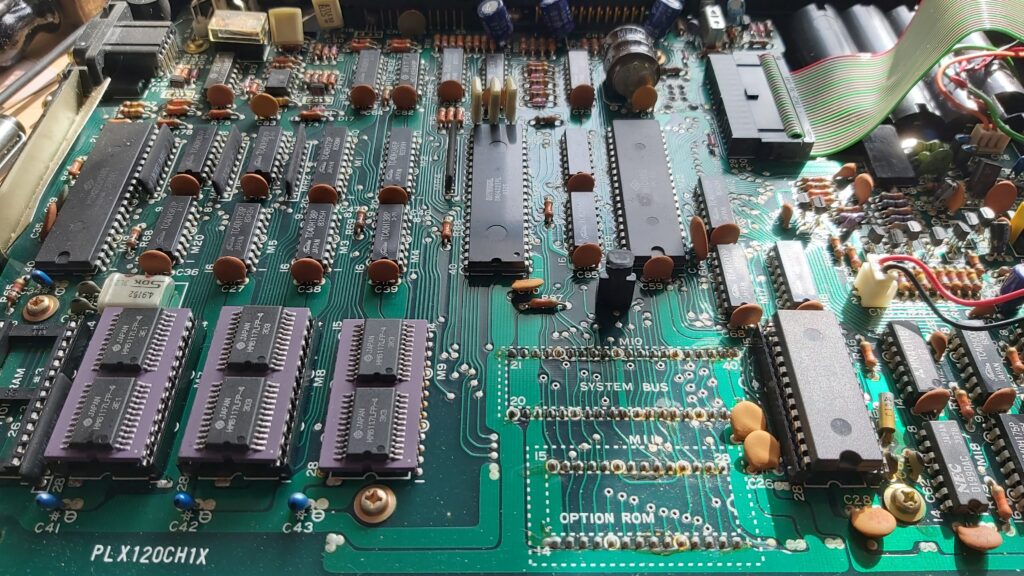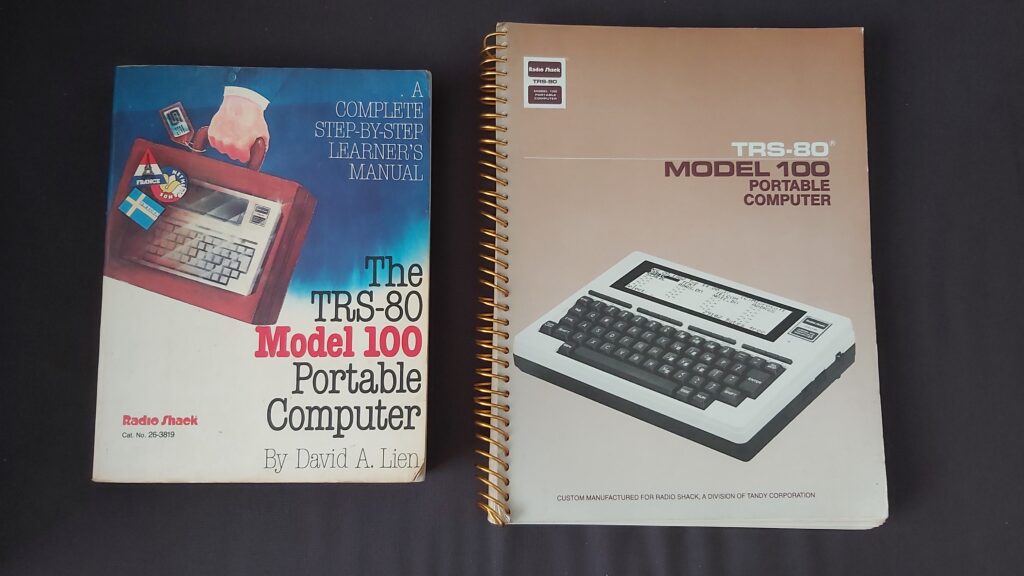You’ll all know by now that I’m a massive fan of very early portable computers, and I’ve owned a couple for a while – the Cambridge Z88 and the Amstrad NC-100. These date from 1987 and 1992 respectively, and are both interesting and useful machines. However, the history of the keyboard-LCD display-AA batteries combo in a package the size of an A4 pad goes back further. One of the earliest machines
of this type was the Radio Shack TRS-80 Model 100, of 1983. Hugely expensive in its day, this was possibly the earliest ancestor of the modern laptop. Available in 8K and 24K models, it was a simple 8-bit machine with a 40-characters-per-line, 8-line LCD display. It had a few simple built-in applications, including a text editor, BASIC editor and comms software. This latter was the killer feature – the machine had a built-in modem (in America at least – more on that later) and could therefore transmit text to remote machines. It soon became the weapon of choice for journalists in the field. It became very popular, and no less than six million were made.
And…guess what? I’m typing this on one as we speak!



Given the history of this machine and its significance in the development of portable computing, I couldn’t resist. I found one on eBay for a reasonable price, and it turned out to be lovely when it arrived.
Although similar in concept to the later machines I’ve already mentioned, it looks and feels much older and simpler. It’s very thick and chunky compared to them, but still pretty portable. It has a properly-vintage keyboard very typical of early 8-bit machines. It’s lovely to type on, but a bit noisy. There’s a row
of dedicated function keys too. My model appears to be a UK-specific one without a modem, and has 24K on board (just as well, the 8K version is pretty useless).

Firing it up was fascinating. On booting up, a menu screen allows text files and programs to be edited and created, and allows access to the built-in programs. A scheduler and address book are included, but they’re pretty much useless and not worth using. The text editor is simple but effective, and the BASIC language included is quite comprehensive, so offers a lot of potential for the would-be tinkerer. Like most machines of the day, there’s no menus and most things are configured via BASIC commands. This includes the clock, which works well but only stores the year as two digits, so the machine tells me it’s 1922. There’s no memory cards, of course, the machine being far too old for such things, so the default storage medium is cassettes. I’ve yet to try this as I don’t have the right cable, but what I have managed to do successfully is transmit data off the machine using RS-232. It turned out to be far easier than I expected, and is how I’ve got this onto my laptop for publishing.

There is, however, a strange fault afflicting this machine which I can’t seem to fix. When using the cut/copy/paste functions in the text editor, the PASTE key pastes upper-case letters in alphabetical order instead of what has been copied into the paste buffer. This has baffled a few Model 100 experts and seems to suggest memory corruption. It seems to be the only issue affecting the device, though, and I guess for now I’ll have to live with it. Given the age of this thing, odd issues like that aren’t surprising. There’s still quite an active user community around this machine, which can be expanded quite easily. There’s an additional ROM socket on the base of the unit which can provide extra applications, and assorted ROMs are available, offering an improved experience. I’ll keep an eye out for those. I’d like an extra 8K memory module if I can find one too. I’m keen to print directly from the machine as soon as I can get hold of a printer cable as well.
This really is an interesting episode in the history of portable computing. I’ll certainly keep an eye out for more things I can do with this, and shall keep you posted.
So you are a man or woman?
Neither.